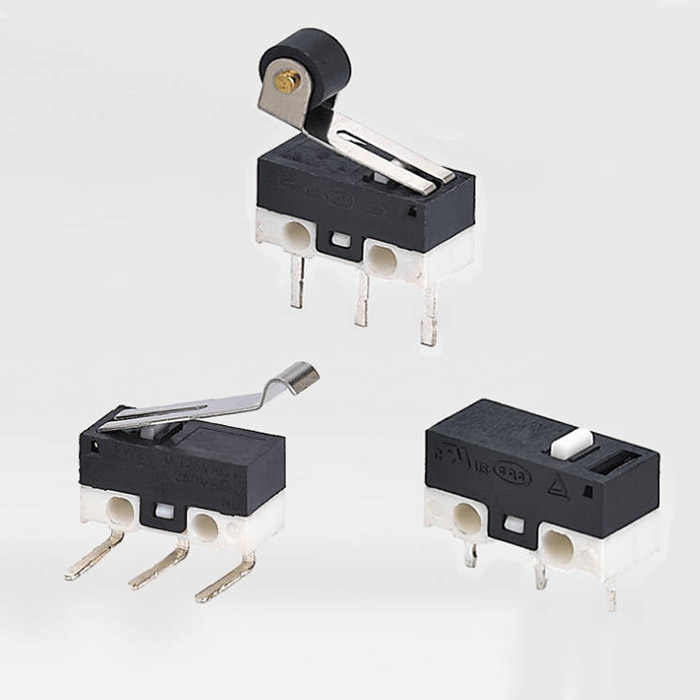Why do micro switches fail?
2023-12-18
Micro switches, while generally reliable, can experience failures due to various reasons. Some common causes of micro switch failures include:

1. Mechanical Wear and Tear: Continuous or frequent use of the micro switch can lead to mechanical wear on the internal components, such as the actuator, spring, or contacts. Over time, this wear can cause degradation, affecting the switch's performance and leading to failure.
2. Environmental Factors: Exposure to harsh environmental conditions, such as extreme temperatures, humidity, dust, dirt, or corrosive substances, can damage the internal components of the micro switch. Corrosion or contamination can impair the functionality of the contacts or other sensitive parts, resulting in malfunction.
3. Overloading or Electrical Arcing: Excessive electrical loads, voltage spikes, or arcing during switching operations can damage the contacts of the micro switch. This can lead to contact welding, pitting, or burning, affecting the switch's ability to make proper electrical connections.
4. Improper Installation or Handling: Incorrect installation, mishandling during assembly, or applying excessive force to the actuator or lever can cause damage to the internal components of the micro switch, leading to premature failure.
5. Fatigue or Stress Failure: Extended use or frequent cycling of the switch can lead to fatigue failure, especially in the spring mechanism. The repeated stress applied to the components over time can cause fatigue, leading to a loss of elasticity or deformation, and eventually resulting in failure.
6. Manufacturing Defects: Occasionally, defects in manufacturing, such as subpar materials, improper assembly, or inconsistent quality control, can lead to premature failure of the micro switch.
7. Age and Service Life: Like any mechanical or electrical component, micro switches have a finite service life. Over an extended period, even with proper usage and maintenance, the internal components may deteriorate due to aging, leading to eventual failure.
To mitigate the risk of micro switch failures, it's essential to use high-quality switches suitable for the intended application. Regular maintenance, proper handling, and adherence to operating conditions recommended by the manufacturer can also help prolong the life and reliability of micro switches.


